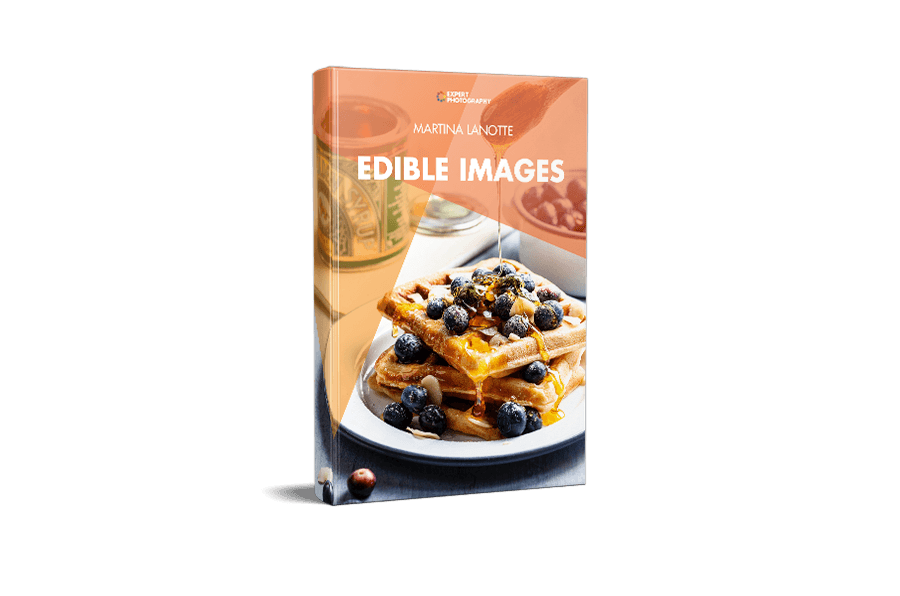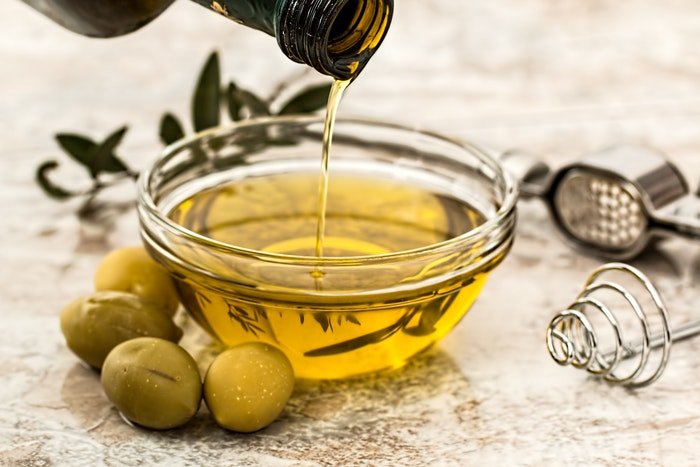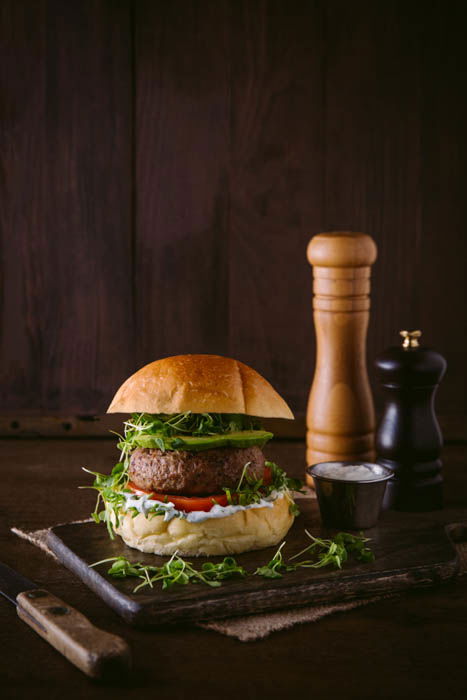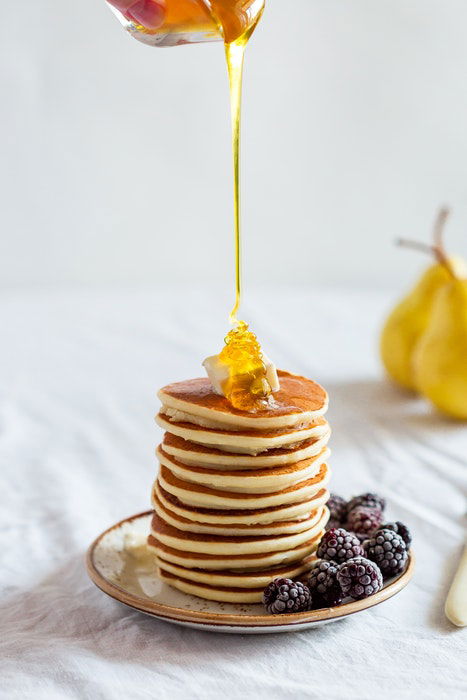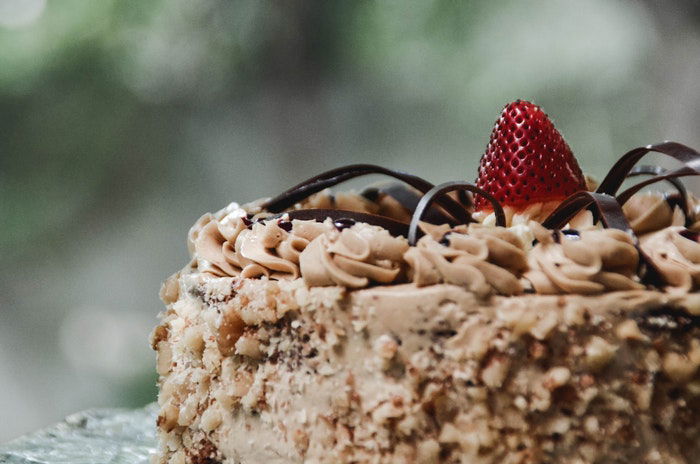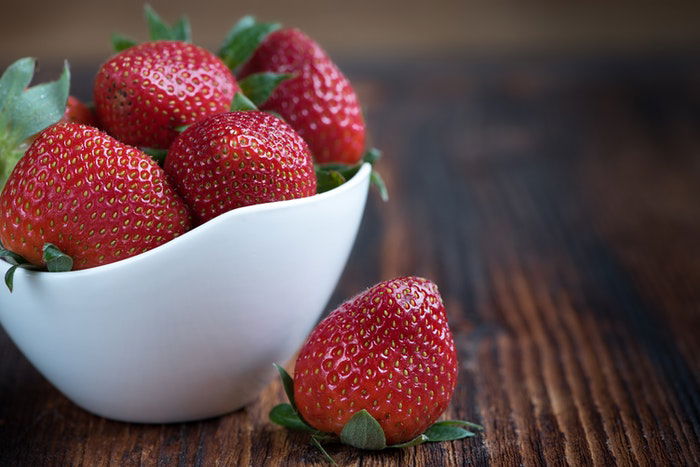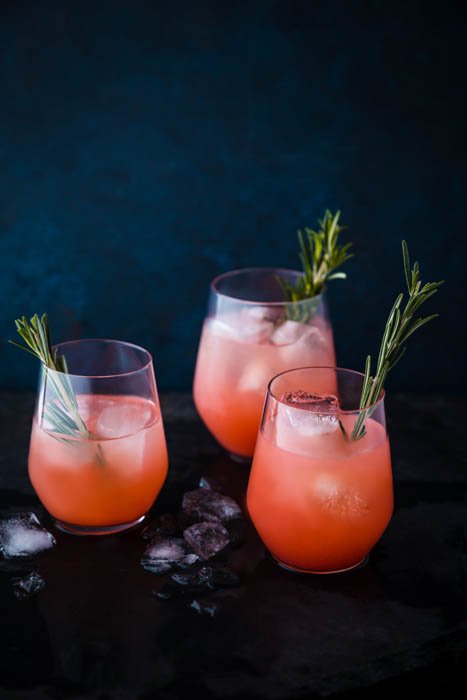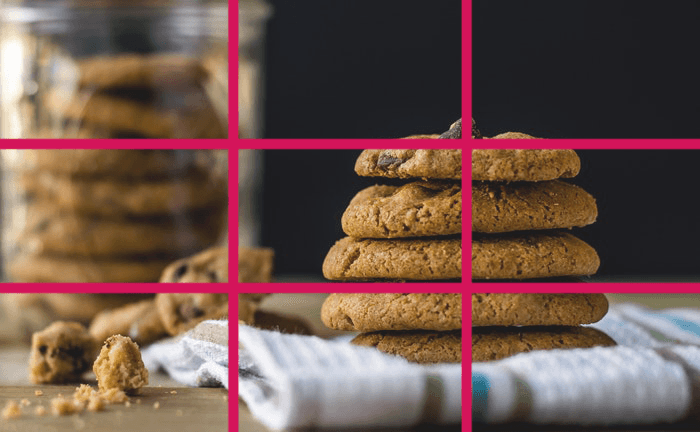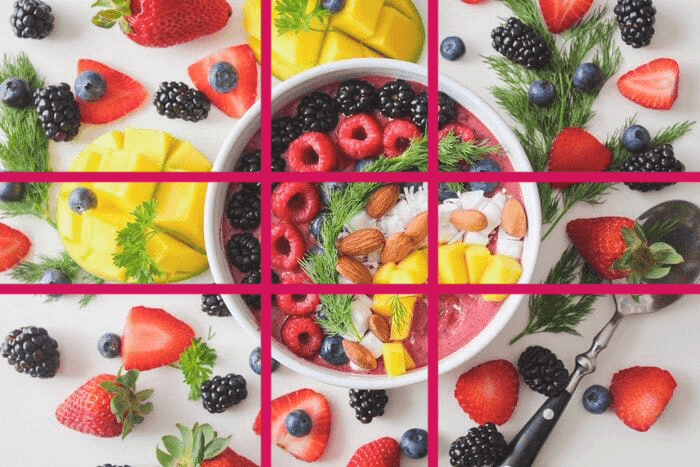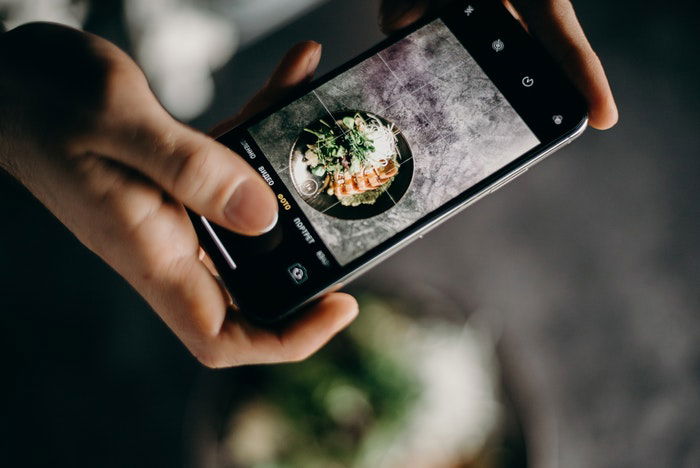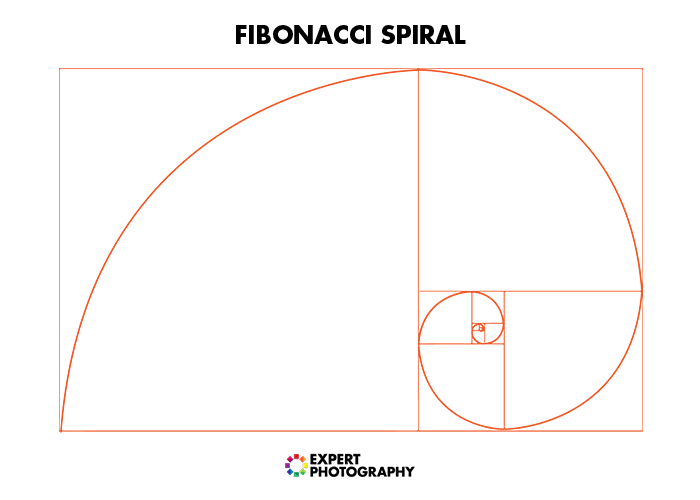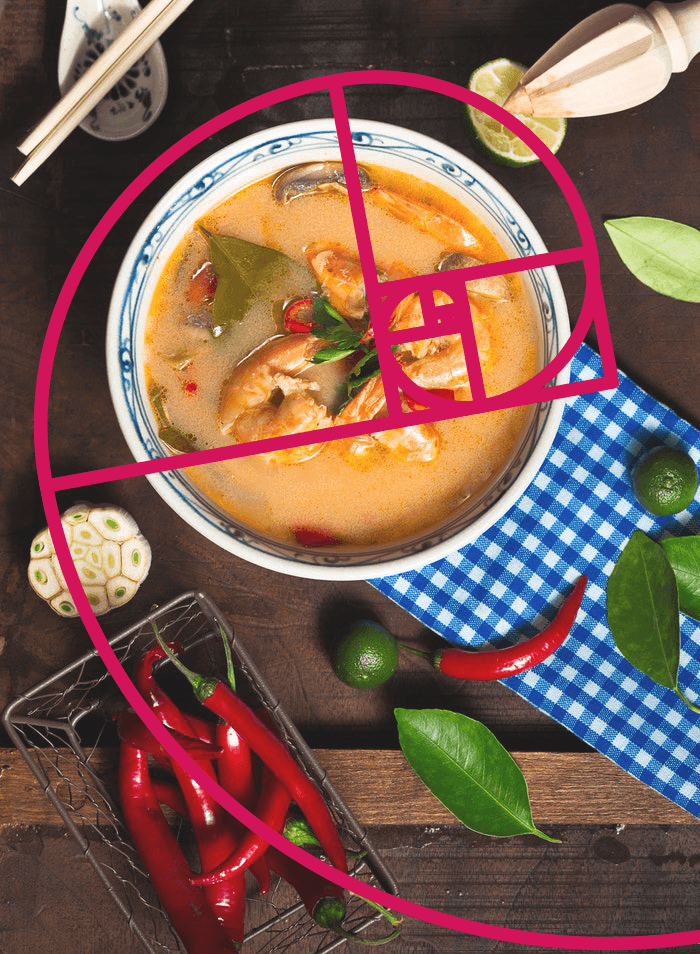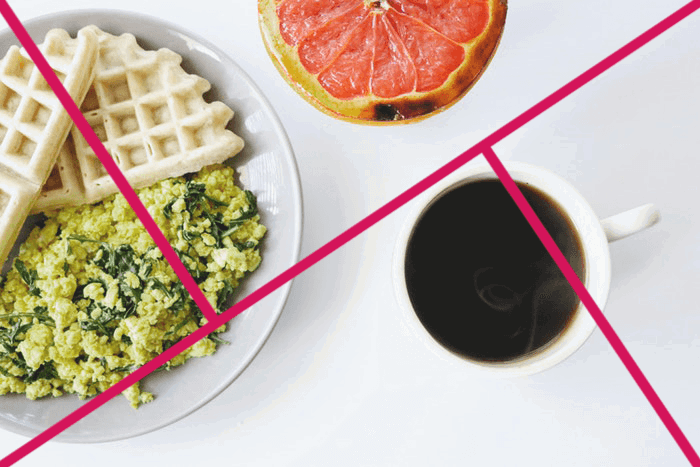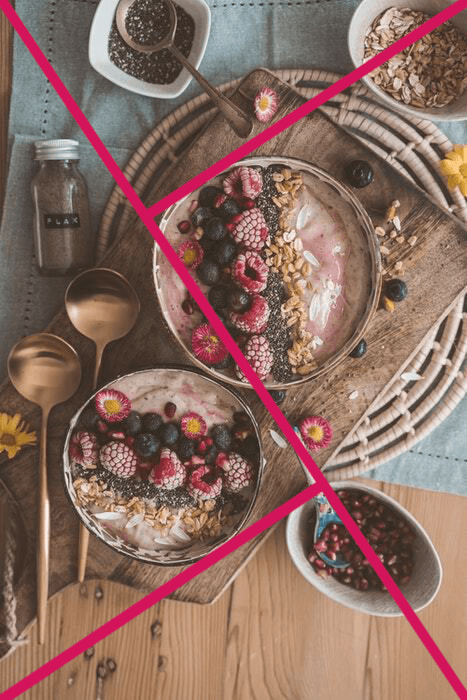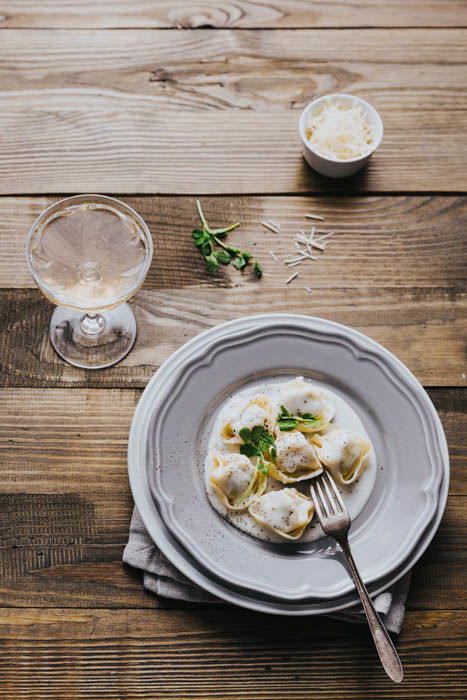In either case, the principles of good composition are essential to create successful food photos. Here are 10 essential tips for food photography composition. For even more tips, check out our Edible Images e-book. [ExpertPhotography is supported by readers. Product links on ExpertPhotography are referral links. If you use one of these and buy something, we make a little bit of money. Need more info? See how it all works here.]
10 Essential Food Photography Composition Techniques
1. Arrange Elements to Maintain the Viewer’s Interest
To make the most use of compositional theory, we must understand how our eyes move through an image. In the Western world, we read from left to right. This means our eye travel through an image similarly. We first go to the most significant point of interest and then work our way around the scene.
2. Use Angles and Orientation to Complement the Food
In food photography composition, your camera angles and orientation are crucial. They not only affect how you present the dish, but they also shape how people perceive your image. There are three main camera angles for food photography. They are 90 degrees (overhead), 45 degrees, and straight-on. The type of dinnerware and props you use often dictate the angle you choose. So choose the best perspective that supports the appeal of your main subject. Tall foods like burgers look best using a straight-on angle. It not only emphasizes the food’s height but also shows its layers. In food photography, the overhead view is a popular angle because it creates visual order. It also helps minimize height issues when there are several elements in the image. Of course, it’s best not to shoot overhead when dealing with several layers of elements not visible from above. I shot these mussels overhead instead of capturing them in a bowl. This showed the breadcrumbs and garnish.
Viewers react best when you shoot your food photos at 45 degrees. This is because it replicates how they usually see their meal when eating at a table. And how about orientation in food photography? Professional food photographers use both portrait and landscape orientations all the time. In most cases, they prefer portraits when working on magazines, ads, and cookbooks. This is Because their pages tend to be vertical. I chose a portrait orientation for this burger shot to emphasize its height and ingredients.
3. Improve the Composition With a Focal Subject
Whether or not your photography food style is minimalist, it is best to only use one item as your main subject. Of course, you can have more than one main subject. Generally, having one point of interest makes your composition much more coherent. Use one primary subject and a couple of supporting elements when composing your shot. Your main point of interest should also dictate the placement of the other items in the frame to create depth in your composition. Furthermore, include props of different sizes so that they counterbalance each other. This concept also applies when portioning your food.
How to Create a Focal Point to Emphasize the Main Subject
The focal point refers to the specific spot on your subject that you want to emphasize. You can create focal points with light, color, isolation, or contrast. It can be anything from a raspberry on a cake or even the tip of a knife. You’re free to have two or three focal points within the grid. But one must be more dominant than the others. In most cases, it helps to ensure that your main point of interest is the sharpest part of the image. You can do this by widening your aperture. This consequently creates a shallow depth of field.
4. Use Negative Space to Provide Balance
Positive space is the area your food and props take up. Meanwhile, negative space is the area where your eyes can rest. It provides balance, breathing room, and emphasis on the subject. Because it’s mostly blank, it brings your attention to the details of the food. Food photography also tends to involve a lot of empty spaces to create spots for text placement. You’ll notice this in magazine shoots, product packaging, or ad work. When too much is going on in an image, the viewer is unsure where to look. If you use negative space, use patterns or backgrounds that complement your subject. This way, your main point of interest stands out more.
5. Use the Rule of Odds to Create Balance
When photographing a group of objects, use an odd number of elements in your image. Odd numbers create a sense of balance and harmony. And it also provides a resting point for our eyes. An even number of objects can divide our attention and compete with each other. In food photography, the aim is to have three or five props. Of course, you can have more than five items. But the result will be different and won’t have the same compositional effect. I shot these gin grapefruit cocktails using three stemless wine glasses instead of four. I also arranged them to form a triangle. Doing so created harmony and balance in the image.
6. Place Main Elements Using the Rule of Thirds
When learning about food photography composition, you will come upon crop guides like the rule of thirds. It’s a grid that divides the frame into nine equal sections. The crucial elements in the scene fall along the grid’s lines or at the points where they intersect. The rule of thirds tool helps you decide how to place the main elements in your food photos.
7. Create Interesting Compositions With the Phi-Grid
The phi grid is much like the rule of thirds regarding food photography composition. Both grids look almost the same, but the center lines of the phi grid are closer together (more in point 9.).
8. Visualize the Composition With Crop Guides
Crop guides help you fix your composition when post-processing food photography. You can find crop guides in Lightroom, Photoshop, Capture One, or even on your phone! Use them to help you visualize your composition. You can easily imagine your focal point on a phi-grid. But visualizing a golden spiral (point 9.) ahead of time can be much more challenging. It can take years for a photographer to master composition rules only by imagining the lines. So these crop guides are invaluable. They show us exactly where to place our main subjects. They can even speed up the process of learning to compose intuitively, which is the ultimate goal. Do you shoot food photography with your camera tethered to a computer? Then use the Live View function on your computer screen to help place your main subject. You can use your mouse to click on the element you want to be sharp. And your computer then sends a command to your camera to focus on that specific point. Once you take the image, check how it looks with the crop guide of your choice. You can then make adjustments to your composition.
9. Make Creative Choices With the Golden Ratio
The phi-grid follows the “golden ratio,” which is 1:1.168. This ancient mathematical concept creates a balanced and pleasing composition. You can find the golden ratio anywhere from nautilus shells to flower petals. It even appears in the human body as well as in DNA molecules! Perhaps that’s why we gravitate toward it. Nature aside, we can use this knowledge in our food photography composition. Incorporating the golden ratio in images helps our brains process visuals easier. Now let’s discuss a variation of the golden ratio, which is the Fibonacci spiral. The Fibonacci spiral is a sequence of numbers that make up the golden ratio. As pictured below, you can draw a series of squares using this numerical pattern.
You create the Fibonacci spiral by drawing an arc from one corner to the opposite corner in each square. It’s mind-blowing. Isn’t it? But how can the Fibonacci spiral help you with your food photography composition? Put your subjects along a curved line rather than a straight line. Doing so creates flow and movement, guiding your viewer’s eye around the image. This composition technique works very well for overhead shots. And it also creates balance when there are several elements in the frame. For the picture of the curry below, the placement of the chili peppers leads the eye to the bowl. It then moves the eye to the top part. And finally, you look at the focal point, the green leaves and prawns on the top. Notice how the focal point also uses color contrast to lead the viewers’ eye into the spiral. The contrasting colors of red and green pop next to each other. Plus, they also get separated from the orange background. You can flip or turn the spiral when arranging your composition, depending on whether you’re shooting vertically or horizontally. The direction of the flow is not crucial. What’s important is that your focal point falls in the smallest part of the spiral. And you should also place other essential elements along the curve. Use this food photography composition technique to help you create more minimalistic images. Or even to keep flat lays or tablescapes from looking too cluttered or disjointed.
10. Use the Golden Triangle to Draw The Viewer’s Attention
Another powerful approach for food photography composition is to use triangles. These shapes keep the attention of the viewer within the frame. This is because they make the eye move from one point to another in a continuous loop. Triangles are also powerful composition tools when creating food photos because horizontal and vertical lines suggest stability. And it also helps that triangles have three points. Remember, odd numbers provide a sense of harmony and balance. You can divide the frame into four triangle shapes to guide the viewer’s eye to different details in the picture.
They work great for some compositions. But for others, adding a sense of flow and movement may have more impact. So how do you create triangles in your composition? First, draw an imaginary diagonal line across your frame. Then create new ones from the other two corners so they’d meet the long line at right angles. It should look something like this.
Your points of interest should be where the lines meet. Placing your main subject in one of the intersections draws the eye to the focal point. Another way to use this concept is to imply triangles within your composition. I placed the corn cakes and dip in triangles in the image below. It gives that sense of movement and pattern. When you repeat elements and frame them in triangles, the eye naturally follows them. The plate is in the center of the frame. But the image still carries tension due to the triangle made by the food.
Conclusion: Essential Food Photography Composition Techniques
Becoming a better photographer involves critiquing your work. Always consider the various composition tools to help you improve your food photography. Apply the crop guides to some images you have taken and analyze them. Ensure you have placed your subject where the eye naturally gravitates. You can use triangles to place your elements in your scene. You can even set your focal points on the intersecting lines of the phi grid. Or perhaps include some negative space. Ultimately, the point of the composition is to create balanced dynamic images and guide the viewer’s eye. The stronger your composition, the better food photography you create! If you’re eager to improve your food photography shots even more, check out our articles on food styling tips or tools for food styling! And for all the best food photography tips, read our e-book Edible Images!
